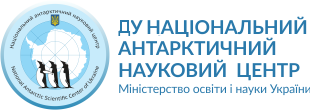Ukraine joined the Antarctic Treaty on 17 September 1992 (Resolution of the Verkhovna Rada of Ukraine № 2609-XII), and on 27 May 2004 it’s received the status of a Consultative Party. This status gives Ukraine the right to veto when making decisions, which must be adopted only by consensus (all Parties must “agree”). In addition, Ukraine has the right to scientific, tourist and economic activities in Antarctica. For example, to create scientific stations, send scientific expeditions, extract permitted marine resources etc.
The main points of the Treaty are as follows:
- Antarctica shall be used for peaceful purposes only (Article I);
- The Treaty guarantees freedom of scientific research in Antarctica and cooperation for this purpose (Article II);
- in order to guarantee the peaceful use of the continent, all areas of Antarctica, including all stations, installations and equipment within those areas shall be open at all times to inspection (Article VII).
Other documents included in the Antarctic Treaty System take into account, supplement or specify the provisions of the Treaty.
- Convention for the Conservation of Antarctic Seals (London, 1972). The document deals with saving, scientific study and rational use of Antarctic seals. In particular, the Convention establishes restrictions on the commercial fishing of seals and takes into account the peculiarities of the ecological system of the continent;
- Convention on the Conservation of Antarctic Marine Living Resources (Canberra, 1980). Taking into account the approaches to the preservation of the ecosystem of the continent, the Convention defines the rules according to which marine living resources are protected and rationally used. A special commission monitors compliance with the Convention;
- Protocol on Environmental Protection to the Antarctic Treaty (Madrid, 1991), also known as the Madrid Protocol. It declares the Antarctic a natural reserve intended for peace and science, and also defines the comprehensive protection of the environment of the continent;
- Recommendations (agreed measures, decisions, resolutions) adopted by the Consultative Meetings of States Parties to the Antarctic Treaty. Usually, these recommendations are aimed at the implementation of a specific clause of the Treaty.
The most complex document of the System is the Madrid Protocol. It was the result of many years of work on environmental standards in Antarctica.
The main theses of the Madrid Protocol are as follows:
- The Antarctic is a nature reserve dedicated to peace and science;
- prohibition of all activities relating to Antarctic mineral resources, except for scientific research;
- environmental protection is a basic requirement that is taken into account when planning and implementing all types of activities in Antarctica;
- the planning and implementation of all activities in Antarctica should be preceded by an assessment of the impact of such activities on the Antarctic environment;
- for any activity, prior to its realization, emergency response plans should be prepared.
During the 32nd Antarctic Treaty Consultative Meeting (Baltimore-Washington, USA, 2009), the Parties adopted the Washington Declaration. In it, the Parties confirmed their unwavering commitment to the principles and provisions of the Antarctic Treaty and all other acts that appeared after it’s signing.
The new declaration on the occasion of the 60th anniversary of the signing of the Antarctic Treaty was adopted at the regular Antarctic Treaty Consultative Meeting in Prague (Czech Republic) in July 2019. In the declaration, the Consultative Parties reaffirmed their strong commitment to the implementation of the principles of the Antarctic Treaty, among which special attention is paid to the protection and preservation of the natural environment of the region.
During the years of presence in Antarctica, Ukraine adopted a lot of documents necessary for activities in that region. For example, in 2017, the Measures approved at previous meetings of the Antarctic Treaty Consultative Meeting were approved.
russia’s full-scale invasion on the territory of Ukraine affected the course of the Antarctic Treaty Consultative Meetings.
The Ukrainian delegation actively interacts with partners for the entire Antarctic community to respond to russian aggression. For example, during the 44th Consultative Meeting, which took place on May 24, 2022 in Berlin (Germany), 25 participating countries expressed strong support for Ukraine in connection with the aggression of the russian federation and staged a demarche during the speech the russian representative, defiantly leaving the meeting hall.
In 2023, on the eve of the 45th Consultative Meeting in Helsinki (Finland), the Ukrainian delegation held a photo exhibition “Ukraine in the Antarctic: Research and Invincibility”. The purpose of this exhibition was to highlight the work of the National Antarctic Scientific Center under the difficult conditions of russian aggression. The exhibition presents photos about the history and modernity of Ukrainian research in the Antarctic, the unique nature of the icy continent. A special place in the exposition was occupied by two collages: a photo of the premises of the National Antarctic Scientific Center, crushed by a russian rocket hitting the center of Kyiv, and Ukrainian polar explorers who joined the ranks of the Armed Forces and defend Ukraine.
After what they saw and heard from the Ukrainian delegation, most of the consultative countries of the Treaty condemned the russian aggression.
Website of the Secretariat of the Antarctic Treaty: https://www.ats.aq/index_e.html

